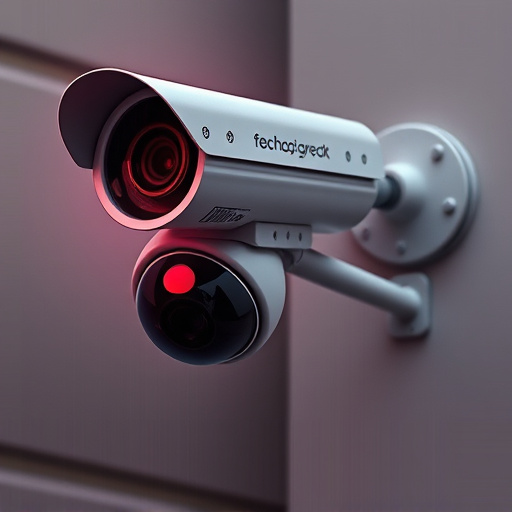Dummy cameras, powerful psychological deterrents with realistic features like lenses, LED rings, and motion sensors, enhance home and business security by appearing as active surveillance. Key types include mock motion-detecting indoor cameras with flashing LEDs and spinning lens covers, and waterproof fake CCTV cameras for harsh weather conditions with adjustable angles and low-light technology. Strategic placement near entryways or valuable assets increases realism, while periodic changes in position and angle maximize their deterrent effect. Legal and ethical considerations require responsible installation practices to avoid a false sense of security.
“Discover the power of deception with our guide on setting up fake security monitoring devices. We explore ‘Understanding Dummy Cameras’ and why they’ve become a popular deterrent for criminals. From the ‘Most Convincing Dummy Camera Types’ available, we uncover their unique features and how to strategically place them for maximum effect. Learn about the legal considerations and ethical implications while learning how to create a realistic fake security system that can protect your property effectively.”
- Understanding Dummy Cameras: Why They Are Used
- The Most Convincing Dummy Camera Types and Their Features
- Setting Up a Realistic Fake Security System
- Legal Considerations and Ethical Implications of Using Dummy Cameras
Understanding Dummy Cameras: Why They Are Used
Dummy cameras, also known as fake security cameras, are an effective and often underutilized tool in home and business security. Their primary purpose is to deter potential intruders by giving the appearance of active surveillance. While not designed to capture actual footage, these devices serve as a powerful psychological deterrent, making them especially valuable for areas where real cameras might be less visible or accessible.
Among various types available, the most convincing dummy camera typically features a realistic design that mimics genuine security equipment. It includes components like a lens, an LED light ring, and a housing that closely resembles a real camera body. Some advanced models even come with motion sensors and flash functionality, making them appear active when triggered, further enhancing their deterrence factor. This type of dummy camera is ideal for strategic placement in areas where intruders might attempt to break-in or tamper with actual security gear.
The Most Convincing Dummy Camera Types and Their Features
When it comes to choosing the most convincing dummy camera types for a fake security monitoring setup, there are several options that blend seamlessly with real cameras while deterring potential intruders. The market offers a range of models designed to mimic the look and features of actual surveillance equipment. One of the most popular choices is the mock motion-detecting camera. These devices often feature flashing red LEDs and a spinning lens cover, creating the illusion of active monitoring. They can be easily mounted outdoors or indoors, mimicking the typical placement of security cameras.
Another highly convincing dummy camera type is the waterproof fake CCTV camera. Designed to withstand various weather conditions, these cameras are a great choice for outdoor security setups. Their robust construction and realistic appearance make them difficult to distinguish from genuine security equipment. Many models come with adjustable angles, allowing for versatile placement and enhanced surveillance capabilities. Additionally, some advanced versions include low-light technology, ensuring clear images even in dimly lit environments.
Setting Up a Realistic Fake Security System
When setting up a realistic fake security monitoring device, choosing the right dummy camera is crucial. The most convincing dummy camera type should mimic genuine features like motion detection, night vision, and weather resistance. Look for models with LED lights that can simulate infrared illumination, making them appear active even in low-light conditions. Additionally, consider cameras with adjustable mounting options to replicate various installation scenarios.
Placement is key to enhancing realism. Mount the dummy camera at strategic points where real security cameras might be installed—for example, near entryways, windows, or areas with valuable assets. Ensure it has a clear view of the targeted area and adjust its field of vision accordingly. Periodically changing the camera’s position or angle can further increase its effectiveness in fooling would-be intruders.
Legal Considerations and Ethical Implications of Using Dummy Cameras
The use of dummy security cameras, often considered as a cost-effective solution for property owners and businesses alike, raises several legal and ethical questions. While they serve as an effective deterrent to potential thieves and vandals, the placement and use of these devices must adhere to regional laws and regulations. One of the most convincing dummy camera types available in the market today is the high-definition (HD) simulation camera that closely mimics a real security device. However, it’s crucial for users to understand that simply installing a realistic-looking dummy camera might not be enough to shield them from potential legal issues.
The ethical implications extend beyond the legal framework. Using fake cameras may create a false sense of security and could potentially mislead individuals into believing they are fully protected. Moreover, the presence of these devices should be transparent to avoid any misunderstanding or intrusion on privacy concerns. In light of these considerations, property owners and businesses must ensure they use such devices responsibly and in compliance with local laws, prioritizing transparency and ethical practices while enhancing their security measures.
In light of the above discussions, it’s clear that dummy cameras, while not active surveillance tools, offer a practical and often surprisingly convincing solution for deterring potential intruders. Among the various types available, wireless dummy security cameras stand out as the Most Convincing Dummy Camera Type due to their ease of setup and realistic appearances. However, it’s crucial to navigate legal considerations and ethical implications when deploying these devices, ensuring compliance with local regulations and respecting privacy rights. By carefully setting up a realistic fake security system and being mindful of these factors, homeowners can enhance property safety without compromising on integrity.
